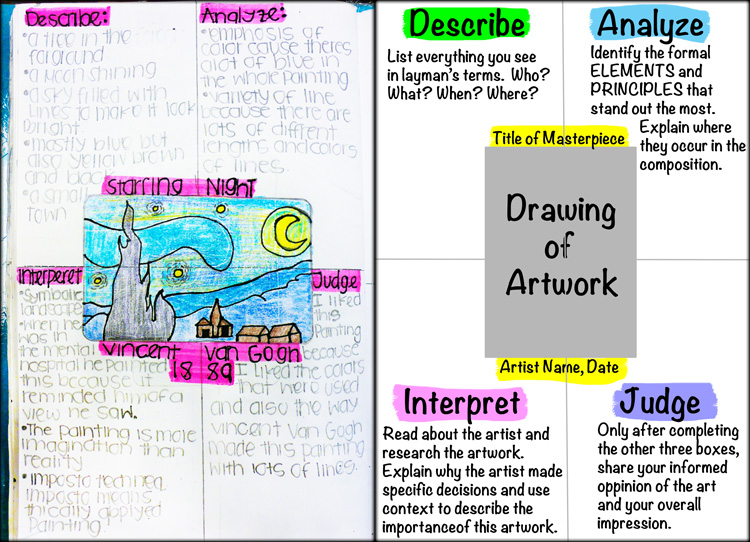If you teach in one of the states that used the PARCC exam this year, then you know that Analytical Writing is a big part of our students' standardized assessment now. Our students need to be able to prove their ability to:
- cite evidence
- analyze content
- study & apply grammar
- study & apply vocabulary
- conduct discussions
- report findings
Source: PARCConline.org
If you've ever held a formal critique or taught your students the skills of art criticism, you can probably already see how the "Analytical Writing" skills and art class can go hand-in-hand.
Behold... a fantastic TED Ed video that exposes the importance of Art Analysis:
How art can help you analyze - Amy E. Herman
Seriously... if your students don't start paying attention at the bit about bank-robbing ninjas with lasers, then I can't imagine how hard your job must be. But I digress...
It seems that most art teachers follow some version of Feldman's Model of Art Criticism, in which step two is even called "Analysis." If you're like me, you encourage your students to learn and use appropriate art-related vocabulary during critiques (for example, if a student says, "The yellow makes that shape pop," we discuss how the artist "used color to create contrast and emphasis"). We're only on Step 2 of the critique process, and we're already touching upon five of the six analytical writing skills listed above! Art Teachers: WE ARE CHAMPIONS!
Except maybe your students aren't writing... maybe your critique is verbal. Maybe you don't really want to have your students write essays. What can you do?
 |
| Example from Julia Sanderl's blog |
 |
| Examples from my students at RMHS |
My students have 90-minute blocks, so we were able to finish this assignment in one class period.
The handout I gave my students was actually a print-out of the "Feldman's Model of Art Criticism" pdf linked above, with Julia Sanderl's illustration and a short numbered list of instructions on the bottom. I found that my students got a bit confused about which set of questions to answer (the ones in the illustration, or the one at the top), and that some of the questions had wording that was too vague and caused additional confusion. At some point I will make an updated handout for my own future use, and I'll post a link here!
I think if students start using this process early, then writing a more in-depth formal analysis later (in the year or in their progression of courses) would not seem like a daunting task.
Another resource that I have found indispensable this year is this 5-page pdf by Mrs. K. Wood at Forsyth Country Day School. I used her document to create a "Guided Written Art Critique" packet, which served at the mid-term exam for my Advanced Art Students this year.
If you're in search of more resources about art analysis, I tend to gather all the neat stuff I find about critiques (and artist statements) on this Pinterest Board. Please send me your favorites!
P.S. The MOST BEAUTIFUL example of a sketchbook art analysis I have ever seen:
 |
| Click to visit the website where I found this analysis |



Woah! This topic has been so nicely discussed here. These are some of the games that are included in my LSAT Prep Courses. I am going to share this post with all my friends because it is important to understand the technique of solving these analytical writing questions.
ReplyDelete